book excerpt
This article discusses the characteristics to look for in a bikepacking bike that will be suitable for extended touring on a wide variety of terrain, and looks at what we consider the optimal bike for strength, comfort and fun.
If you’re considering setting off on a multi-month bikepacking trip, or looking to make the cross over from a classic cycle touring set up to a more off-road, bikepacking focussed rig, read on. We’ll talk about bikes that suit long journeys and rough dirt road riding or singletrack, and share some thoughts about frame and fork choice and some of the features to consider in a frame.
This post is an excerpt from the e-book Bikepacking & Off-road Cycle Touring Guide.
Bikepacking Bikes
Humans have been touring great distances on bicycles for over a century. In the not too distant past, many of the paved roads that we take for granted were still dirt – at least in sections – and if not dirt, then often in poor condition. If you were crossing countries and continents, then often, riding on dirt roads wasn’t a choice, it was just what you did.
The most intrepid of cycle tourists have long sought challenging or remote routes for the opportunity to see remarkable natural places, isolated communities and for the sheer fun of riding a bike in interesting terrain. In many cases those high passes, horse trails and back roads that we know of as popular bikepacking routes today, were first explored long ago by people on skinny tyred touring bikes with traditional panniers. They did more walking than modern bikepackers do, had more punctures, broke more spokes and snapped more frames, but they usually got there. They showed that being intrepid is not about going on an excursion with a purpose built tool for the job, it’s about having the head space to give it a go anyway. The bike you have need not be a barrier to going on a two-wheeled adventure.
For the majority of bikepacking routes, dedicated bikepacking bikes don’t make journeys more possible, they simply provide more reliability, comfort, control and thus make the journey more fun.
→ Colombian bikepacker Diego Supelano crossing a river in Chubut Province, Argentina, with the set up he used to ride from Cusco, Peru to central Patagonia.
Modern bikepacking frames borrow geometry and features from both traditional drop bar touring bikes and mountain bikes and are now a specialised style of bike that embody both the spirit and style of those two strands of cycling. But even within the ‘bikepacking bike’ universe there is now a lot of choice and variation, from relatively slack bikes which are more oriented to short and technical bikepacking trips through to gravel bikes, which are a fast growing subset in recent years.
The bike that we reckon is ideal for long distance bikepacking is somewhere in between, but an individual’s perfect bike will depend to some extent on the style of riding they aspire to do and the kind of routes they plan to ride: for some an adventure gravel bike with drop bars and relatively skinny tyres will be fine for non-technical routes and smoother gravel and paved routes; while others will have a lot more fun on a flat bar bike with plus-tyres if the riding is really rough and on variable surfaces.
What we look for in a bikepacking bike
When we started cycling regularly in the early 1990s, we began as cycle tourers and then became mountain bikers. But we initially chose mountain bikes to tour on, for two reasons; for one, there was not much choice in New Zealand at the time. We were on a budget, and the price of a second hand mountain bike was much more in reach than a specialist touring bike, which were scarce items.
Secondly, the comfortable flat bar, chunkier tyres, stronger brakes and easier gearing all appealed to us. We didn’t care that they might be a bit slower than a skinny tyred tourer, and sometimes we ran 1.75 inch tyres anyway, which helped narrow that gap. We’ve toured on mountain bikes, or bikepacking-oriented mountain bikes ever since.
A flat bar, rigid fork and plenty of tyre clearance are the foundation attributes that we look for in a long distance bikepacking bike. The frame geometry will ideally be optimised for stability and handling when riding loaded, and it will be both stiff enough to still ride well with expedition loads, and strong enough to be unlikely to break.
Plenty of mounting points/braze-ons for racks, water bottle cages and cargo cages enable us to configure the bike to our liking. The most reliable hubs we can afford, laced to strong wheels will help ensure we keep rolling, along with good mid-range disc brakes to slow us down. We like long climbs to be features we can settle into a rhythm on and enjoy, not gruelling challenges that we have to grind up every time, so easy gearing is important to us – it saves energy, sanity and knees.
Our bikes are comfortable and upright enough that we can sit on them all day, and again the next and the next. The fit is just right so that when we get on them, they feel as if they’re an extension of our own body and there is no fighting for comfort or the right position. We’ll get into more details about bike specifics later.
→ Mark and Hana’s Otso Voyteks – carbon framed plus/fat bikes that are well suited to long distance bikepacking.
Comfort is king
Comfort on a touring bike is crucial. A bike set up that feels great for a two hour ride at home may not translate to five to eight hours of sitting on a bike day after day. Saddles in particular can seem fine on short rides, but become fiercely uncomfortable after several hours.
If you’re setting a bike up for a long trip, make sure you get out for some long rides on it to identify any potential hot spots, such as saddle, neck or wrist discomfort, before you hit the road.
Peoples’ preferred overall position on the bike is highly personal, but generally for long tours, a quite upright position is preferable; this places less strain on your neck (neck pain is a common complaint), and also makes it a bit easier to see what’s going on around you. But just how upright is a very individual choice. I suffer from neck pain when I ride in more aggressive (flatter back) positions so require a very upright position, while Hana can ride in a lower position without any issues at all.
It’s important to note that your correct position on the bike is a sweet spot for most people: too upright and you will have too much weight on your backside and not much on your arms, or conversely, too flat and it will put more strain on your arms and hands than necessary.
Bike fit
A professional bike fit is the best way to optimise your position on the bike. A bike fit specialist will not only be able to optimise your fit to compensate for any particular issues (such as neck pain), they will also be able to set your saddle height, saddle fore/aft, cleat position (if using clipless pedals), and stem height. Although bikes come in different sizes, out of the box they are a generalised fit and it’s not unusual to need some tweaks. Although the frame might be the right size for you, the stem or cranks may not necessarily be the optimal length for you.
A good bike fit will contribute significantly towards preventing injuries once you get en-route. Knee pain, hand numbness and achilles tendon issues are common complaints among long distance cyclists, particularly for people who are stepping up to longer days on the bike, and sustained blocks of riding between rest days.
→ From Peru to Coyhaique, Chile we rode Otso Voyteks with 27.5 wheels and 3 inch tyres, which were a good combination for the huge variety of terrain we experienced, from gravel, to singletrack, deep sand and rock strewn roads. Photographed here on the Ruta de las Tres Cordilleras, Peru.
Bike frames
The frame is both the skeleton and the heart of the bike and forms the foundation upon which everything else is built. Like owning the worst house on the best street is better than owning the best house on the worst street; it’s better to have a high end frame and low–mid range parts than it is to have a low-mid range frame and expensive parts.
The characteristics of a good frame, such as the way it dampens trail shock (vibration), handles cornering, responds when climbing and copes with the load of a weeks’ food are distinct. Frames that are specific to bikepacking, and in particular longer-range touring, will be built to cope with the stresses of rough roads and touring loads and to resist flex induced by such loads.
They should be well featured with mounts and braze-ons, which are discussed more further on.
There are many examples of frames out there that match these characteristics really well from the mass produced to the custom built. Check out these manufacturers for some examples at a range of budgets: Otso, Jones, Surly, Salsa, Bombtrack, Tumbleweed, Kona & Stanton.
Plus bike frames
Our preference for long distance touring, and the perfect match for the type of riding we usually do, is the plus bike. Plus bikes allow larger tyre sizes (2.6–3 inch) to be used, which on a rigid bike, is what provides our suspension, as well as traction in a variety of conditions. Depending on the tyre size you run, plus bikes generally have really good clearance too, so you don’t have to worry about mud, or still being able to rotate a slightly buckled wheel either.
→ Chromoly framed Surly Ogre on singletrack in the mountains between Cusco and the Sacred Valley, Peru.
Frame materials
Different frame materials have varying pros and cons for bikepacking and particularly when considered in a long term cycling scenario, where comfort, durability and repairability are factors. In terms of how a bike feels to ride, differences in frame materials will become more evident as your luggage weight increases and/or when roads and tracks increase in roughness or difficulty.
Chrome molybdenum (steel)
The most traditional of all frame materials, chrome molybdenum (aka chromoly) is a high strength steel alloy. It’s the same steel that’s commonly used for making ice axes and crampons, and is used for a variety of industrial purposes.
Because chromoly is strong, the tubes can be very thin, so it’s an ideal frame material. But there can be considerable variation between different steel frame models depending on the tube set (the basic frame building tubes) and the composition of the steel alloy. The thickness of the walls of the tubes, butting (localised increases and decreases in thickness), and the shape of the tube all vary. So different chromoly bikes can have different characteristics. A racing bike might be made from very thin tubing, while a touring frame will use thicker tubes and sometimes reinforcing for increased strength and stiffness.
Overall this type of steel is highly regarded for bike frames because mid- high-end frames deflect road shock through an inherent ‘spring’ in both the steel and the frame and fork configuration. This makes it an excellent material for fully rigid bikes because it provides a comfortable ride.
Steel’s fatigue limit equips it well to deal with repeated stress an infinite number of times, as long as it is below its limit, unlike aluminium which does not have an infinite stress capacity.
Steel’s not the lightest material for bikepacking frames, but it’s good value, strong, reliable and can generally be repaired by a welder if it cracks while you are away on a trip, although unless you can find a frame specialist, it’s likely to be a temporary repair.
Overall, steel is probably still the best material for extended touring, especially in poorer countries where expert repair services might be impossible to obtain. Steel is affordable and practical.
Aluminium
Aluminium alloy is cheaper than steel and easier to manufacture and shape, which is one of the reasons why it is used in mass produced bike frames. It’s very common in low- to mid-range bikes and some high end bikes.
Aluminium bike frames are generally stiff and flex resistant, so work very well when suspension is involved, but historically have provided a harsher ride than steel when the bike is rigid. Modern frame building methods have improved the comfort of high end aluminium frames, but it is still not on a par with steel or titanium.
Aluminium frames are susceptible to fatigue stress over time, meaning repeated stress on a particular part of the frame can mean it’s more likely to fail unexpectedly than other frame materials. Aluminium is not easy to repair because it can’t practically be rewelded to its original strength, like steel can.
For these reasons, unless considering hard tails or full suspension bikes, aluminium is less common as a material for bikepacking frames than steel or titanium, but it is still a relatively popular material for more conventional touring bikes where the majority of the riding is likely to be on pavement or good gravel roads.
→ A carbon fibre framed Otso Voytek in expedition-mode, loaded up with several days food and lots of water capacity. The low profile rear panniers were a Revelate Designs prototype.
Carbon fibre
Carbon fibre is a high end frame material that can be shaped and fine tuned precisely to achieve a balance of stiffness and comfort depending on the frame and its intended use or strength.
Because carbon fibre is a composite, it is anisotropic, meaning that it responds differently to stresses from different directions. This is used in carbon frame construction to make regions of a frame very stiff, but others compliant for more comfort, but it also means one part of a tube can be weaker than another in certain loading situations. Additionally, the epoxy resin used to bond carbon fibre frames dampens vibration.
Carbon has a nearly infinite fatigue life in normal conditions – greater than aluminium – which makes it very durable, but unlike steel it doesn’t bend before it breaks; it’s more likely to fail catastrophically if it’s taken beyond its limit in a high impact crash. Furthermore, carbon frames are more susceptible to damage from side impacts, such as being blown over by the wind onto rocks, or mishandling during transport; circumstances which might leave you with a dent in a steel frame but can crack a carbon frame.
Being softer than metals, carbon frames and forks are also prone to damage from items rubbing, such as bag straps, or by mud build-up on tyres if you are not attentive. In regard to repair, fixing a carbon bike is not as easy as finding a local welder, but it’s more readily repaired than aluminium if you can get to a city where there is a carbon fibre repair service. We have had carbon frames repaired (in New Zealand), and a good repair will be at least as strong as the original frame, if not stronger.
Taking these points into consideration, carbon fibre might sound like an unfavourable material for bikepacking frames in some respects, but in the right frame it can be very good, and carbon fibre bikes have been proven time and time again for shorter duration bikepacking, particularly in ultra races such as the Tour Divide or the Silk Road Mountain Race.
Carbon was not our first choice of frame material for long distance bikepacking, but we’ve had great experiences with the Otso Voytek plus/fat bike. These frames have large tubes and very sturdy tube junctions, which translates to a strong and stiff frame. The stiffness means that even with very heavy loads they transfer pedalling energy into movement very efficiently and handle predictably. On the Puna de Atacama in northern Argentina we carried 16 days’ food and at times 13 litres of water, on rocky roads and experienced none of the flex (twisting) that we have had with heavy loads on steel frames in the past.
In terms of overall durability we’ve racked up over 22,000 km bikepacking on the carbon Voytek without a complaint.
Titanium
Titanium is arguably the ultimate frame material: it’s light, strong, corrosion resistant and has very comfortable, vibration deflecting, ride qualities. But along with carbon fibre, it’s expensive.
If you can afford it, titanium is a compelling choice for long distance bikepacking because, like steel, it has a fatigue limit, below which it can be stressed infinitely without failure. Because it does not corrode it can be left unpainted, a benefit of which is that there is no paint to rub off it with luggage straps or wear and tear. Titanium is lighter than steel, so the tubes can be thicker, which makes them more dent resistant.
Repairs to titanium bikes are tricky, requiring a skilled welder and special equipment. It’s probably easier to repair a carbon bike.
Stainless steel
Stainless steel is less common as a frame material, but shows a lot of potential, for several reasons: like titanium it’s corrosion resistant, meaning frames can be left unpainted; it has very comfortable ride qualities, falling somewhere between a high end chromoly frame and a titanium frame in terms of how it feels to ride; and it’s very strong and dent resistant compared to chromoly, positioning it close to titanium for durability.
Stainless steel suits cyclists looking for a similar material to chromoly, but with close to the weight, strength, stiffness and longevity of titanium, for a more affordable price. In our experience, stainless steel provides a more comfortable, supple but responsive ride than the chromoly frames we have ridden over the years.
Repairs to stainless steel require specialist welding skills, similar to titanium.
→ Otso Fenrir Stainless 29er. Stainless steel provides a really nice ride quality, while being corrosion resistant.
→ Rough tracks on the Ruta Mala, Cuba.
Vibration reduction & stiffness
Regarding the vibration damping, or trail shock absorption, capabilities of different frames; when you are riding with bikepacking bags these absorb a considerable amount of vibration, so this characteristic becomes less noticeable between different frame materials once you are riding loaded. But differences in stiffness as a response to pedalling input become more pronounced, so if a frame is going to flex when you get out of the saddle on a steep climb, you’ll notice it much more once the bike is loaded, especially if you have a big load on the back.
Trail shock reduction begins with your tyres, which should be adjusted so that the pressure is appropriate for the surfaces you’re riding. Plus and fat tyres provide more capacity for this than regular tyres. Further vibration is absorbed by your choice of handlebars and seatpost.
→ Great Divide Mountain Bike Route, USA.
Forks
Suspension forks
For multi-month and longer tours, rigid forks are our forks of choice. As much as we’d love to run suspension forks, they are not ideal for long distance for several reasons.
Good suspension forks are expensive and complex, and potentially an additional mechanical part that might fail unexpectedly. They are also heavier and do not have attachment points for cargo cages, although you can use adapters.
Most forks require air pressure via a dedicated pump with a gauge, which is an additional thing to carry, and they also require reasonably regular servicing to work at their best and prevent undue wear. Fox, for example, recommends servicing their forks every 125 hours (more frequently if used in particularly wet/muddy conditions). If you’re riding at an average of six hours per day (moving time), that’s about every 21 days. Without servicing, seals break down, oil reservoirs dry up, water and dirt can ingress and the fork can be damaged.
Unless suspension forks have a lock-out (to stop them moving up and down) then on a loaded bike they will rob you of energy transfer by bobbing while you are pedalling. This is especially noticeable when you are out of the saddle. A good quality fork lock-out stops this movement, but riding with a fork locked out in the same position for hours or days at a time, repeatedly, can damage the coatings on the fork stanchions.
We love using suspension forks for shorter trips, up to a few weeks, if the riding style warrants it, but don’t use them for long tours.
Rigid forks
For extended tours, rigid forks with cargo cage mounts (aka utility forks) are our preference. Instead of gaining suspension via a fork, we usually use plus tyres (2.6–3 inch) to ease the shock of rough roads and provide traction and make comfort gains in other areas, such as saddle, handlebar and grip selection. Yes, there are definitely times when we wished we had suspension forks, but with big tyres and regular adjustment of tyre pressure to suit the conditions, we find those times are few.
Carbon is our preferred fork material because of the weight savings it makes over steel forks, but steel forks are generally more compliant and therefore more comfortable. The stiffness of carbon forks is advantageous for preventing flex in a heavily loaded bike.
→ Forks with cargo mounts provide easy to reach luggage space. We modified these Salsa Anything Cages by bolting water bottle cages onto them, but some forks have two sets of mounts.
The full chapter from the Bikepacking & Off-road Cycle Touring Guide covers in detail: bike geometry, handlebars, grips, saddles, pedals & shoes, frame mounting points, tyre clearance, wheels sizes, rims, tyres, tubeless set ups, drivetrains & lubricants, brakes, repairs, spare parts and tubeless repair.
bikepacking e-book
Bikes, gear, planning, navigation and living on the road
Bikepacking & Off-road Cycle Touring Guide
Our e-book provides a tool kit of skills and knowledge for cyclists who want to get off the beaten track and undertake extended bikepacking tours, with a focus on travelling light. While the information is designed for cyclists planning long distance off-road tours, it contains many tips that are applicable in any bikepacking scenario, long or short. US$19.99
bikepacking e-book
Bikes, gear, planning, navigation and living on the road
Our e-book provides a tool kit of skills and knowledge for cyclists who want to get off the beaten track and undertake extended bikepacking tours, with a focus on travelling light. While the information is designed for cyclists planning long distance off-road oriented tours, it contains many tips that are applicable in any bikepacking scenario, long or short. US$19.99.

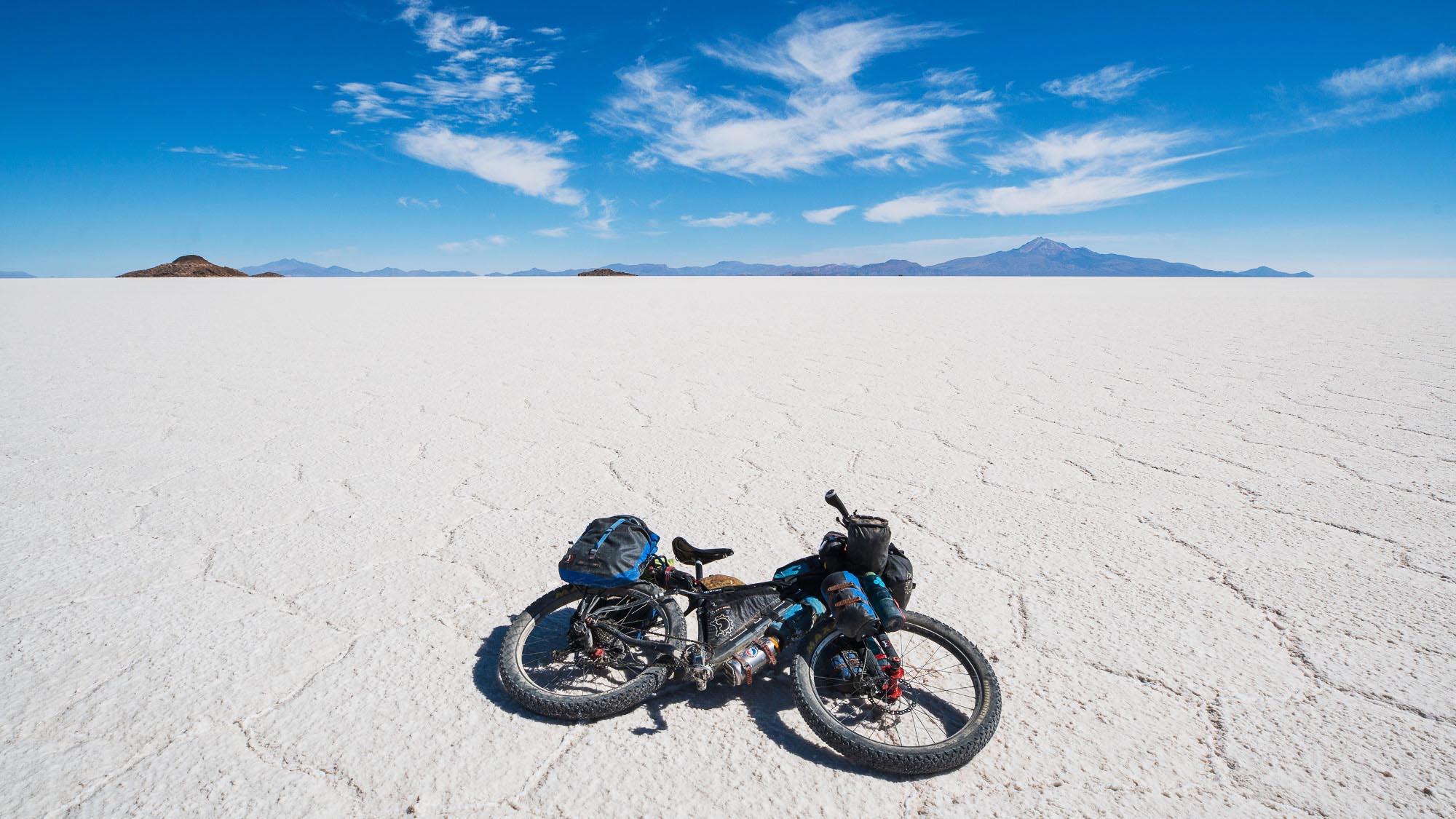
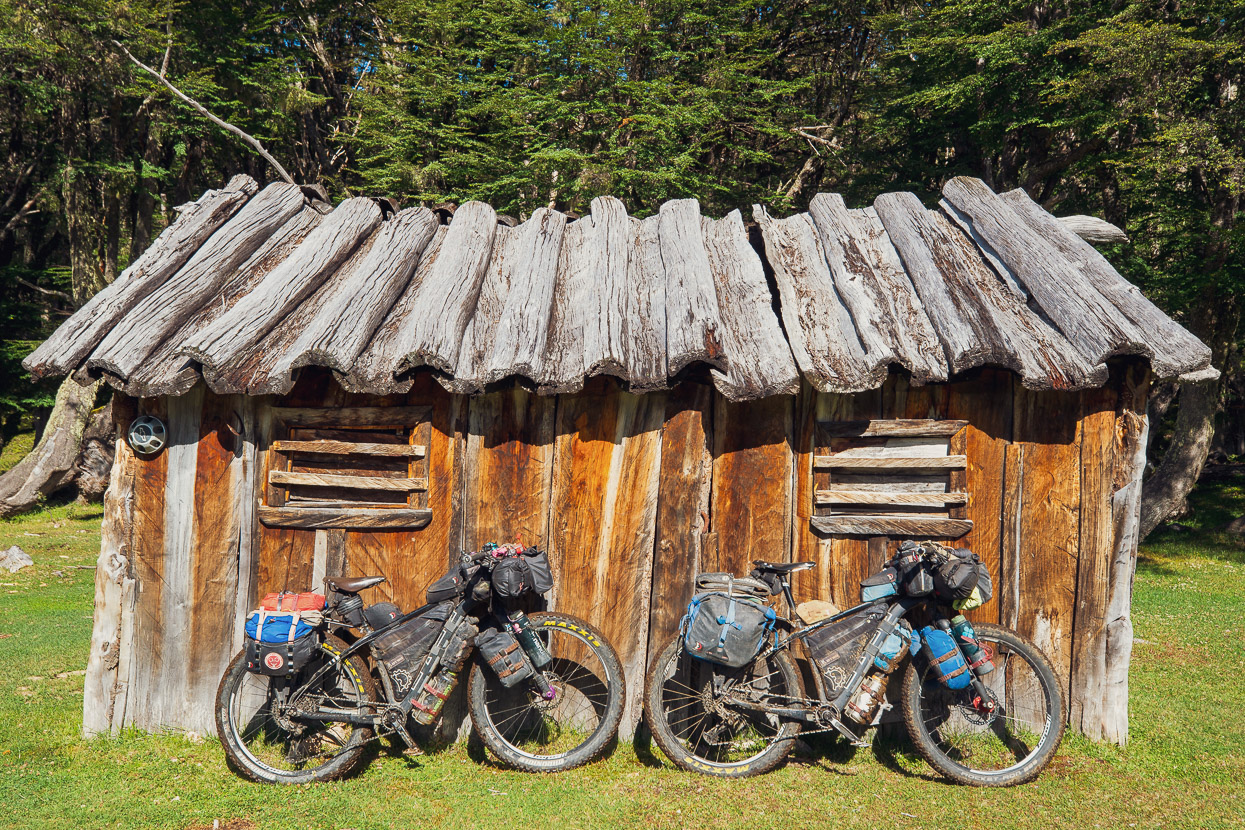
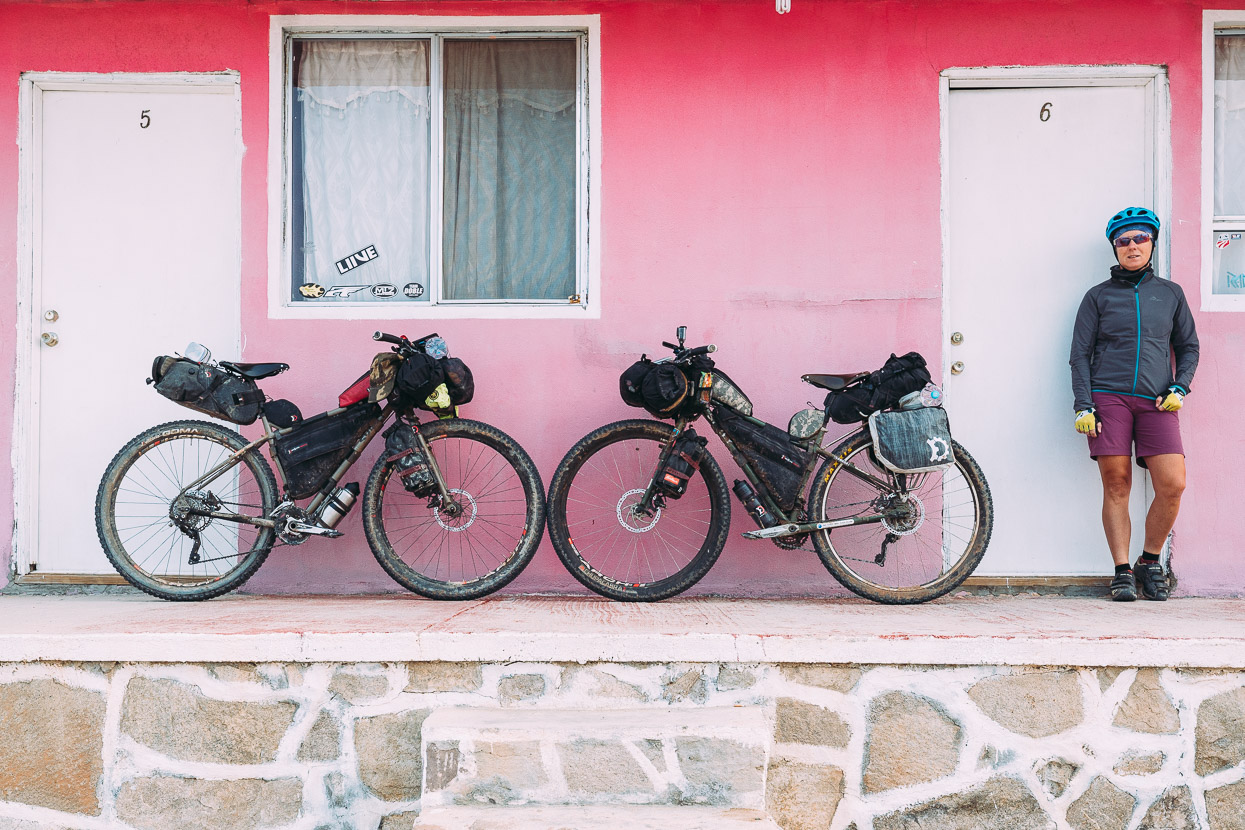
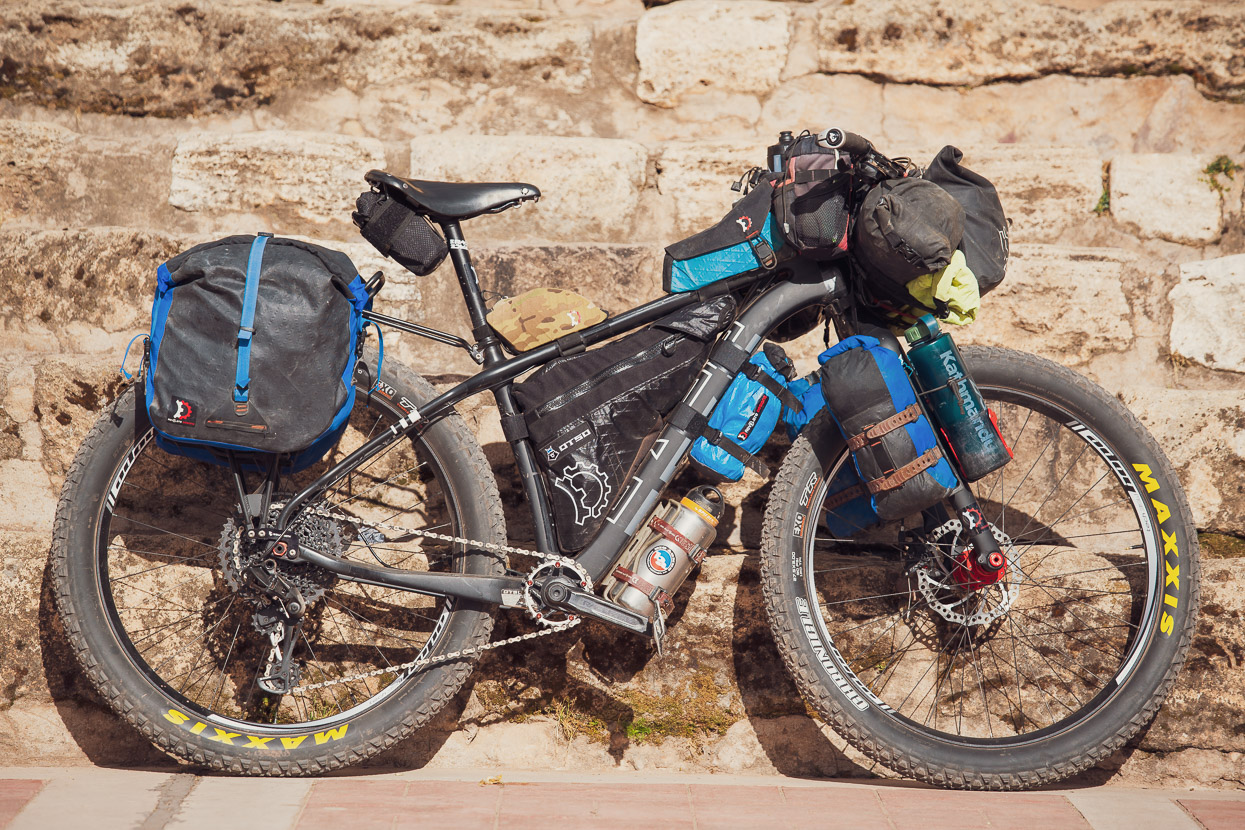
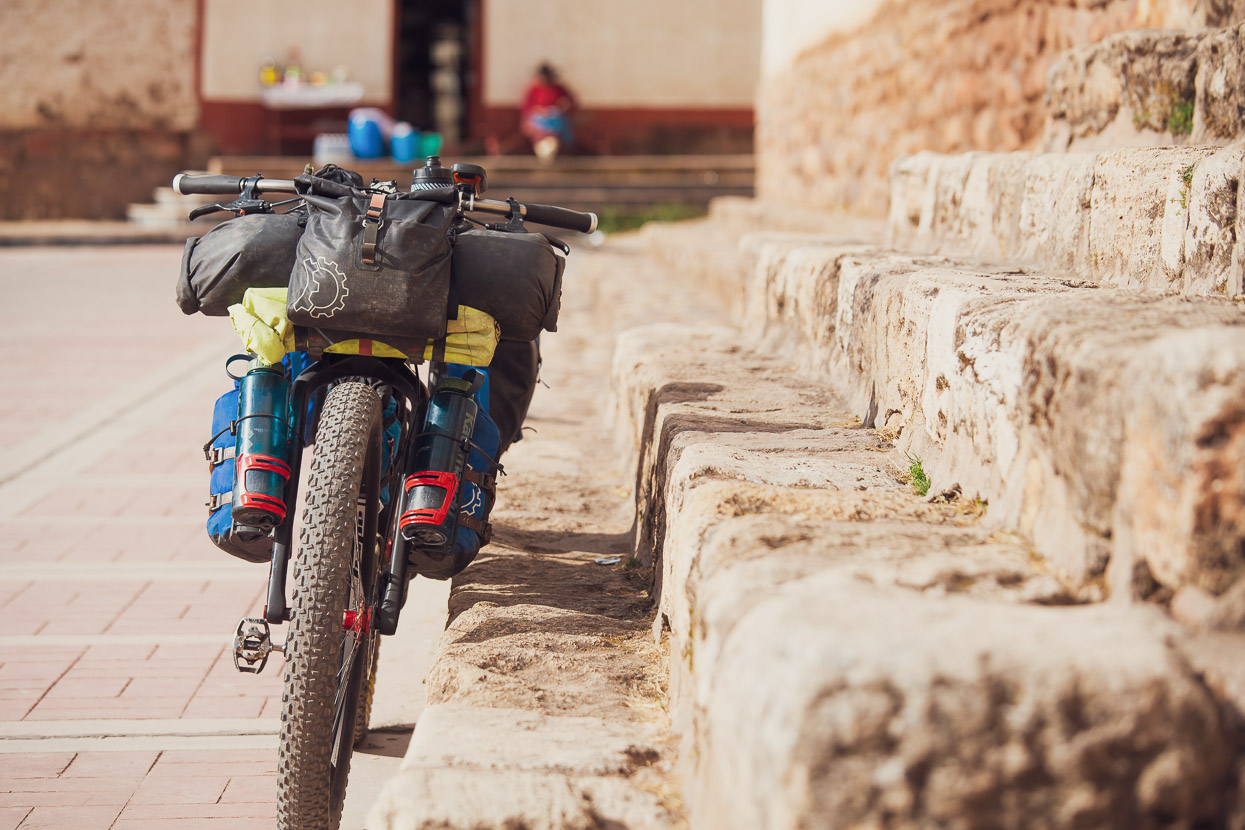
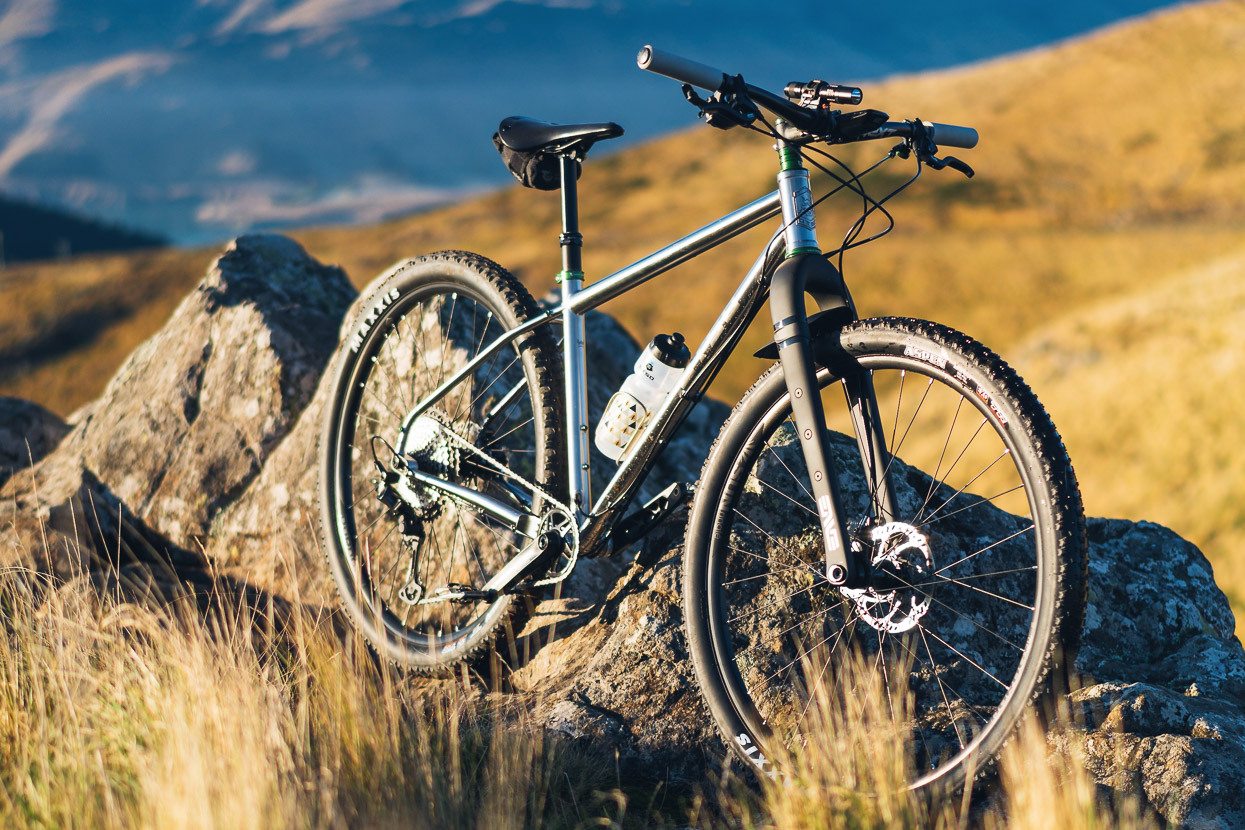
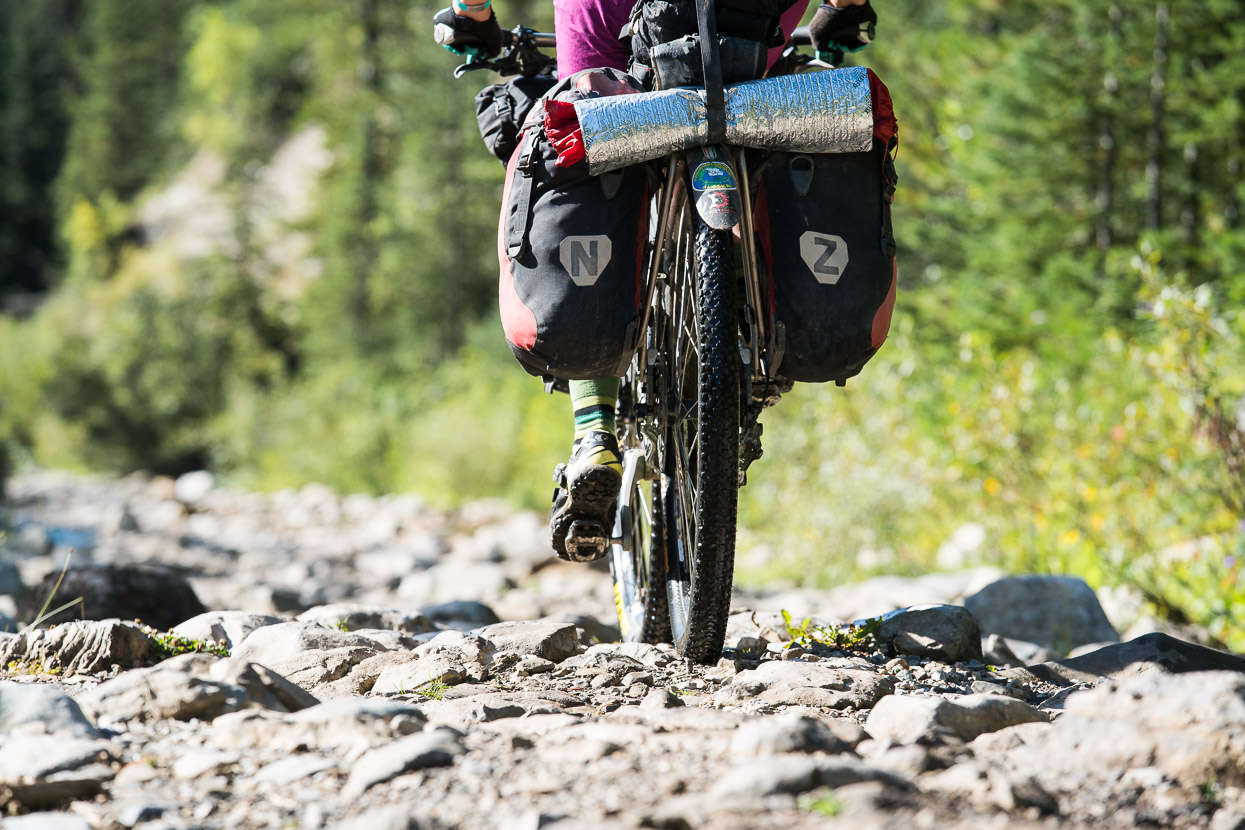
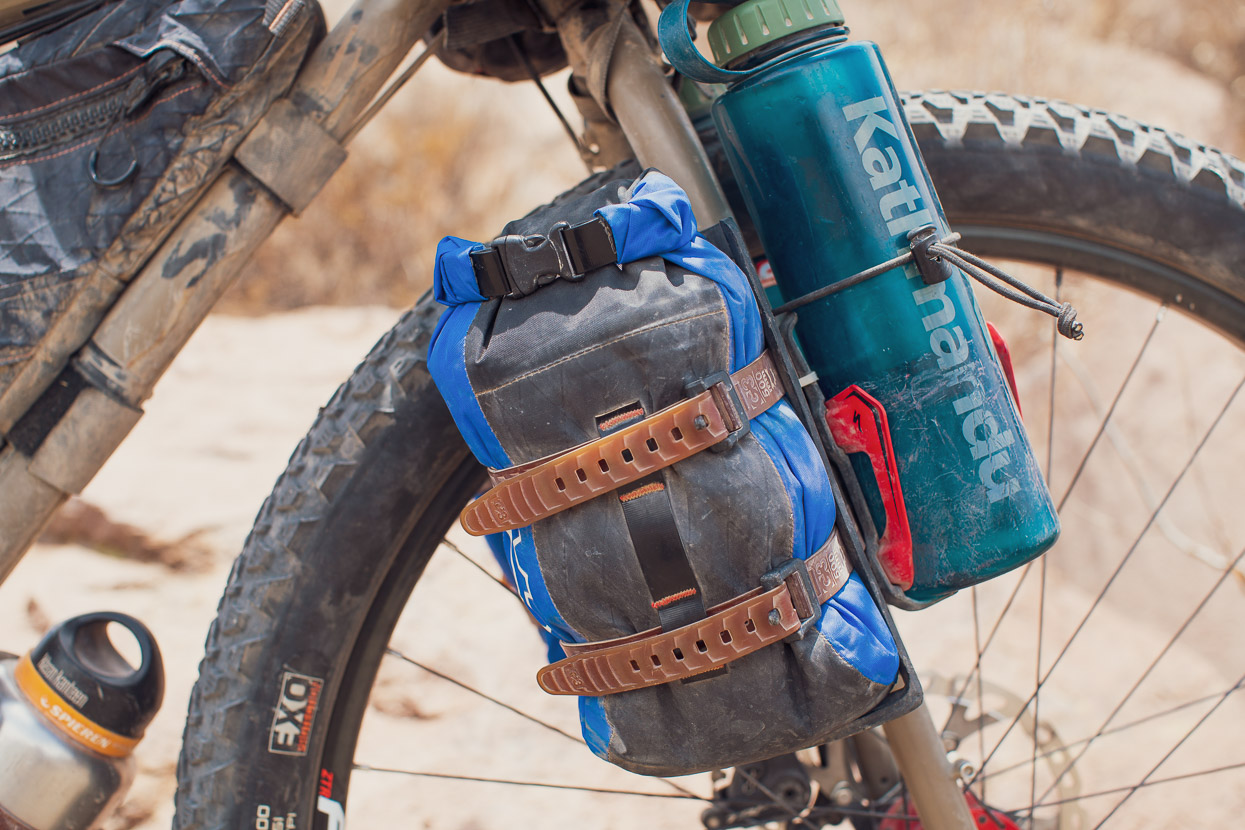
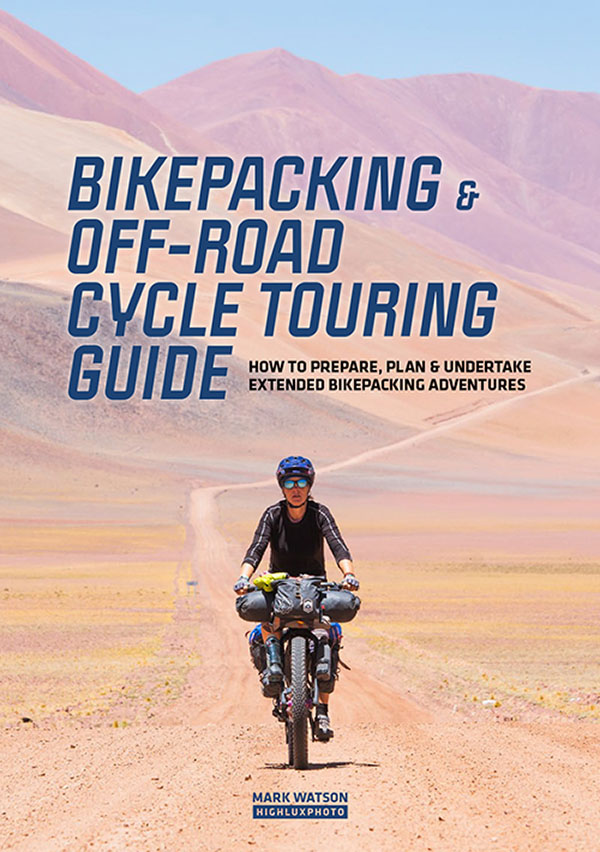




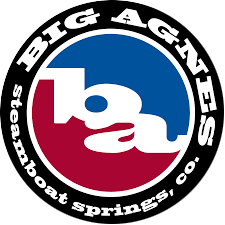








Join the discussion One Comment